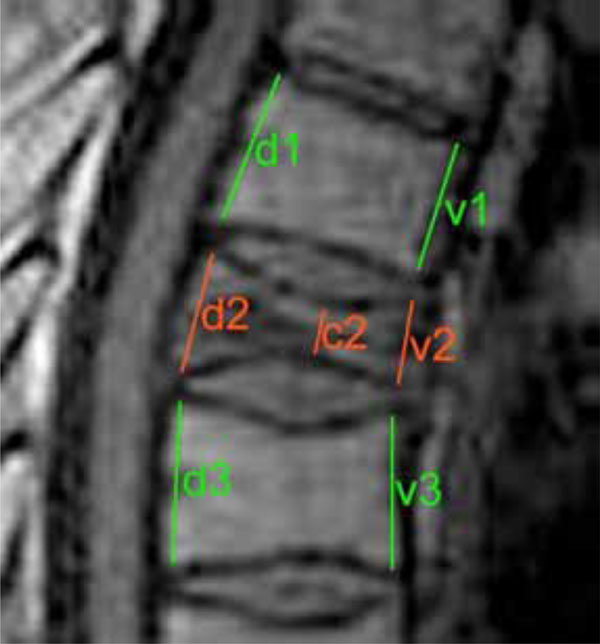Fig. (10) Drawn are the lines with lengths d1, d2, d3, c2, v1, v2, v3 which are used for classification of the vertebral compression fracture and for calculation of three important numbers (v,c,d) which provide decision-relevant information about the geometry of the fracture. They show the relative remainder of the vertebral body ventral (v), central (c) and dorsal (d). Let d1, d2, d3, c2, v1, v2, v3 denote the scalar lengths of the lines drawn in Fig. (10). Then we can calculate the numbers v, c, d as follows: v=2*v2/(v1+v3), c=4*c2/(v1+v3+d1+d3), d=2*d2/(d1+d3). Additionally the number n of the vertebra and a representative measurement of bone density t like the DXA T-score may be important, so that we could define the 5-dimensional feature vector (v,c,d,n,t) for a vertebral compression fracture. For a search it is preferable, but not necessary to know all 5 values. If, for example, someone has a compression fracture and only c and n are known, it is possible to search in the database for all vertebral fractures with similar c and n.


